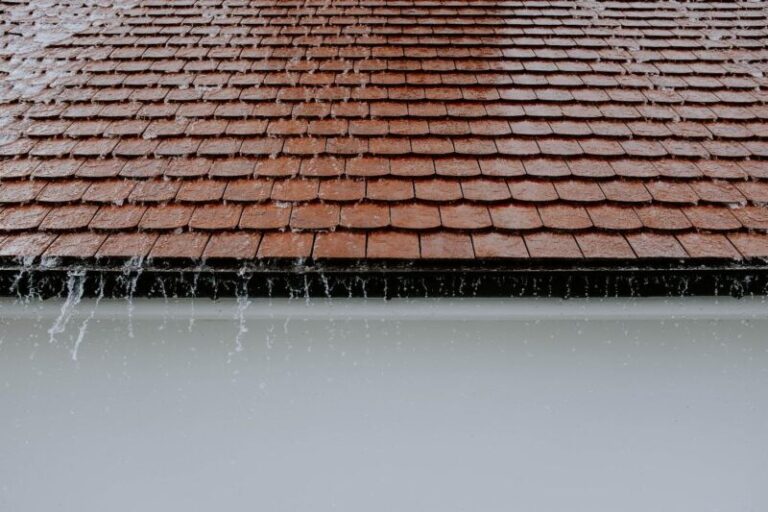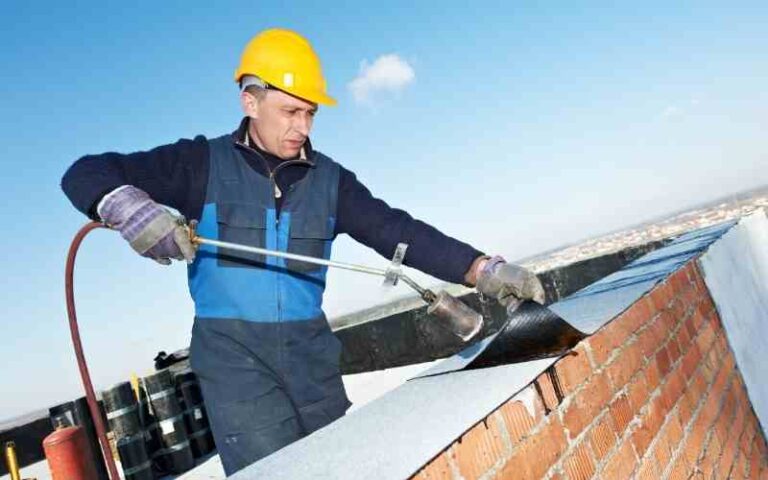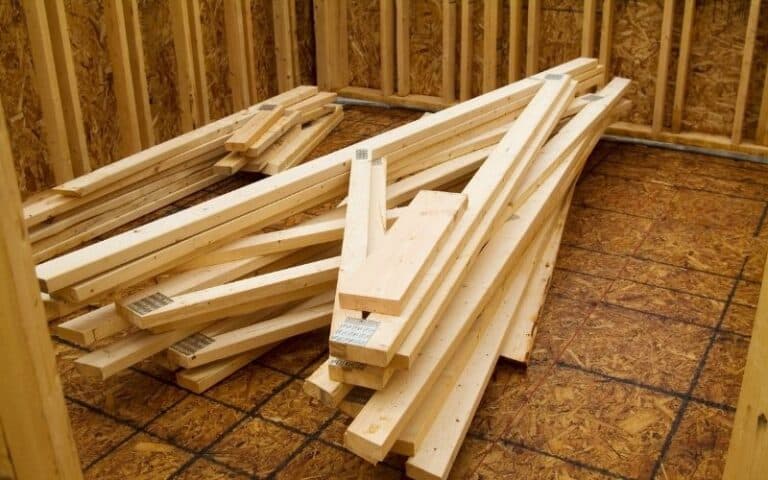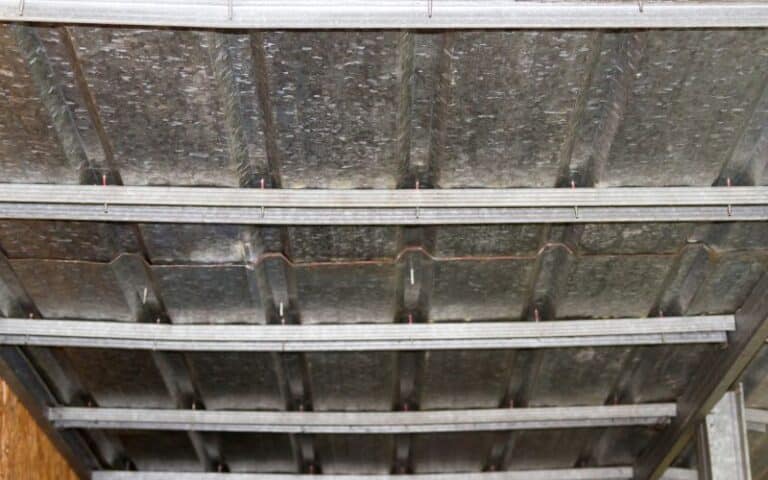Roofing tar is a versatile material used to cover up leaks and to induce heat from the roof. If you have a flat roof, tar will protect it from wind, water, and snow.
The black product from petroleum could be the life-saver your roof needs, especially when it needs immediate patching.
Hot tar on your roof is a big deterrent against ultraviolet rays in temperate climates. But will putting tar on the roof make it hot?
Putting tar on your roof makes the roo hot. However, the temperature is still a factor. Applying tar at 40 degrees Fahrenheit may not heat up your roof. Tar requires a high temperature to seal and dry properly. Nevertheless, do not apply tar on the roof when it is too hot. Rather than seal, the tar will drip.
Ready for a Roofing Quiz?
How Hot Does Roofing Tar Get?
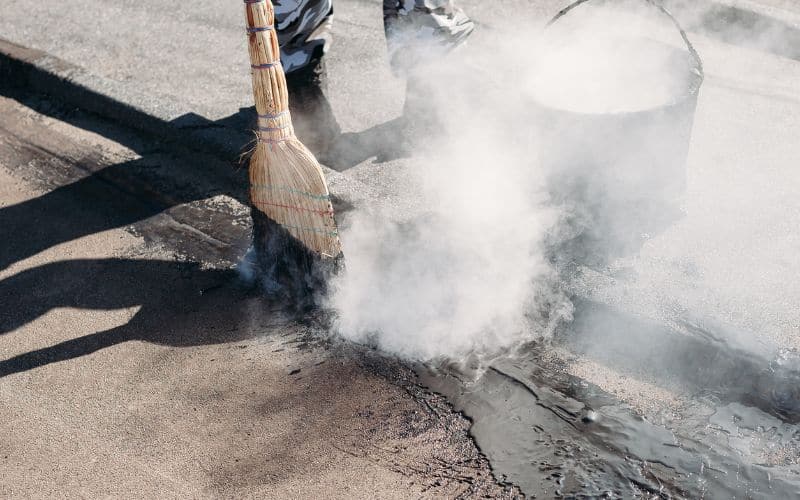
Roofing tar can get to about 500 degrees Fahrenheit. But if it gets that hot, it would either drip, risk ignition, or increase fumes.
As a general principle, ASTM International suggests that the temperature should be about 450-475 degrees.
That way, it is hot enough to cover leaks and solidify the roof while at the same time not likely to be poorly applied.
A consistently high temperature could cause damage to your roof in the long term. Your black roof on a 90-degree Fahrenheit day might reach temperatures of 190 degrees Fahrenheit.
While if it is made of gravel, it could reach 125 Fahrenheit. An unpainted metal roof ranges from 135-146 Fahrenheit.
To be safe, it is a good idea to have a thermometer handy to know the temperature of the tar when applying.
If the tar bursts into flame, do not use water to quench it. It would only spread the flames and the heat.
Rather, use a dry chemical fire extinguisher. Always use protective gears and heat-resistant material in applying hot roofing tar.
What Does Tar Do on a Roof?
Tar on roof repair damages. Its ease of application makes it a common DIY solution for roof leaks and a deterrent to a high residue of snow and water.
Tar is also a good resistor of UV rays, reducing the harmful heat permeating the house.
With tar roofing, the desire to have a long-lasting roof is possible, with little cost to your pocket. If you pick the right product, the substance might work well as an adhesive.
A house exterior can be protected from water damage when you apply tar to the roof. It also prevents insect penetration through your roof.
Applying roofing tar reduces roofs’ water-logged tendency, preventing attics from rotting. In cold weather conditions, this material help roofs stand firm and stay strong.
In flat roofs, roofing tar is used to dampproof the walls and prevent water vapor from seeping through.
In a built-up roof (BUR), for instance, or as a thicker layer mixed with asphalt gravel to provide main roof protection, it acts as an adhesive to hold underlayment and other materials.
Due to its thinness and flexibility when hot, stiffness, and less flexibility when cold, it is unsuitable for roofs with more than a gentle slope since it can soften and drip.
At very high temperatures, hot tars can drip and reduce their ability to act as adhesive.
While applying them and their early days of being set, tars tend to give obnoxious fumes that are considered harmful to man.
The fume irritates the respiratory tract and can cause breathing issues. Ask a professional to handle it to be on the safe side and prevent overlap.
How To Use Tar on the Roof?
Tar is an adhesive for the roof. But before you start to apply it on the roof. You do not want to gall off and injure yourself while tarring suddenly.
Check the structural integrity of your roof.
| Steps | How to Tar the roof |
|---|---|
| Step A | Clean your roof with a broom before applying tar roofing. When there is no more debris, it is time to apply tar to the roof. |
| Step B | Keep the tar bucket nearby as you begin spreading the tar with the roller. |
| Step C | Begin at the farthest corner from your ladder. |
| Step D | Apply the roofing tar with your roller in short, smooth strokes, using small quantities at a time. |
| Step E | As you work, you will return to the end of the ladder, carrying the bucket with you |
| Step F | Continue until the entire roof has gets covered, and then let the material set and cure for the period specified on the container. |
PRO TIP
- Remember to bring your mask and clothes to avoid getting soiled.
- Consider keeping your roofing tar bottle in direct sunshine for approximately one hour. The sun will thin the tar, making it simpler to apply.
- Pour a tiny amount of tar straight onto your roof and spread it around to hide a crack or leak in an existing flat roof.
Will Putting Tar on Your Roof Make It Hot in Summer?
Yes, summer doesn’t only take a heavy toll on humans. Even roofing materials expand and contract.
Tar is a heat conductor, so your roof might get hot during summer. As the roof gets hot for an extended period, it falls prey to wear and tear and might break down faster due to UV rays and thermal shocks.
Heat will also build up in your attic if it is not adequately vented, increasing the temperature in the house.
If you do not want the heat to permeate your home, insulating can be a barrier to the heat from the roof to the house.
Solar panels work hand in hand with tars to prevent the heat energy from condensing harmfully into the house.
You might also try adding an attic fan; this will provide s crosswind for the heat to dissipate.
Always remember that tar tends to melt and go sticky in summer because of the hot weather.
Will Putting Tar on Your Roof Make It Hot in Winter?
Putting tar on your roof in winter will make it hot but not as hot during summer. The tar does not produce heat; it only conducts the heat it absorbs. So, if the temperature in your area is 65 Fahrenheit, heat wouldn’t likely be around.
It is best practice to apply tar during summer, as it meets the minimum temperature of 65 Fahrenheit to prevent the tar from unnecessary hardening.
Roofs sometimes get tarred to reduce the impact of the wind, water, and snow, all features of winter.
If they are tarred during winter, the tar tends to break and might not bond properly. So, it’s best practice to tar your roof before winter.
The temperatures in other seasons reduce the need for focused care and extra time to get the job done.
Conclusion
Your roof protects your home from the outside elements. This is why it’s important to perform regular maintenance on it.
The use of roofing tar is an effective and reliable method for keeping your roof protected and maintained.
If done correctly, you will have a roof ready to withstand the elements for a long time.


